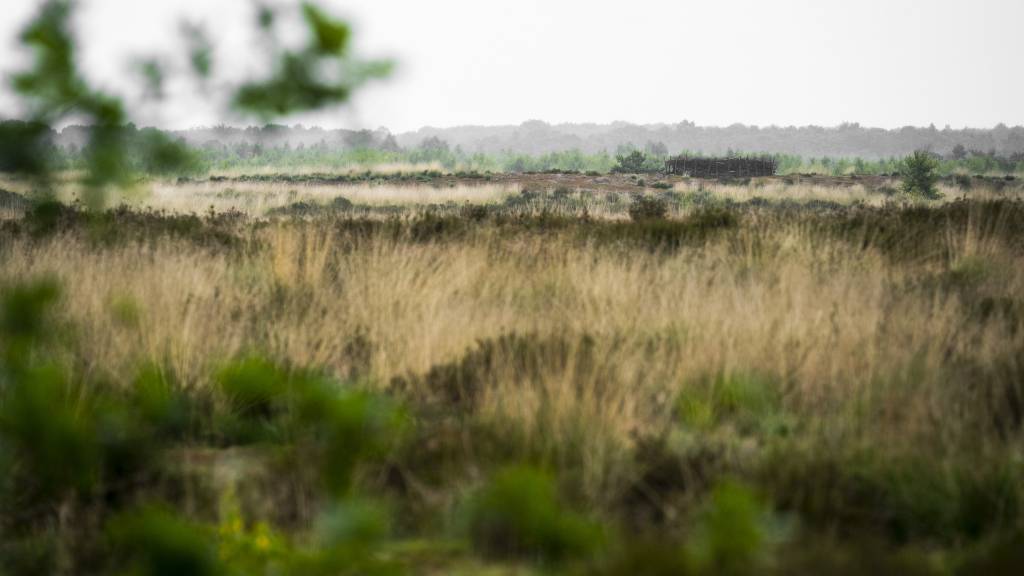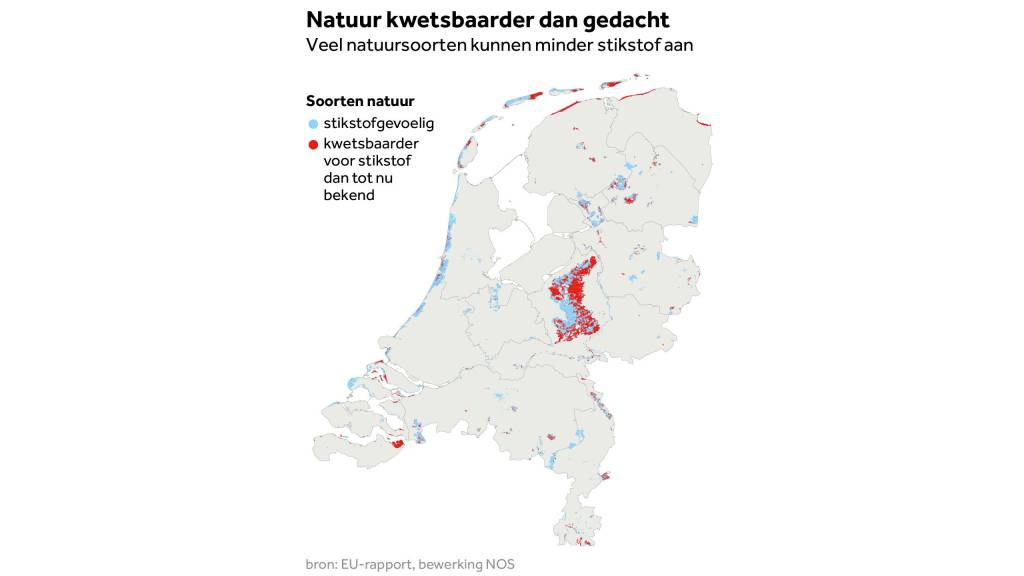
Natural areas are more sensitive to nitrogen than previously thought, stricter measures seem inevitable
AP
NOS . News•
Part of the protected nature in the Netherlands is affected more by nitrogen than previously thought. This came in a report by international scientists to be published later this month. The findings in the report are not without commitment. If the cabinet sticks to its own conventions – which the LNV Ministry says in its response it will – some of the Netherlands’ nitrogen standards should be tightened.
NOS explained the results of the latest preliminary version of the report along with current Dutch nitrogen requirements and spoke to lawyers and environmental scientists about the consequences. It might be great. In any case, it will be much more difficult to achieve the government’s nitrogen targets. “We will determine exactly what the mission means as soon as possible,” the ministry said in response.
The report, published under the auspices of the United Nations, sets new boundaries within which Dutch nitrogen standards must also fall in the future. This relates to the so-called critical precipitation value (KDW), which indicates how much nitrogen a nature reserve can handle before damage occurs. This KDW is not determined by the House of Representatives or the Cabinet, but by environmental scientists on behalf of the Ministry of Agriculture, Nature and Food Quality.
These Dutch scientists are testing their calculations against the soon-to-be-published United Nations report. It appears that a preliminary version of it is already on the website of the German Environment Agency and shows that a number of nature species – so-called habitat types – are more sensitive to nitrogen than previously thought. Sources tell NOS that nothing will change in the content of the report.
The consequences are dire: In dozens of Dutch nature reserves, current nitrogen standards are not strict enough to meet the new requirements. Compare NOS’s new international requirements with existing KDWs in the Netherlands. This shows that 25 to 30 percent of the surface of the Dutch Natura 2000’s nitrogen-sensitive areas does not fall within the new, tighter bandwidth. In almost all Dutch Natura 2000 areas, there is a piece of nature for which KDW will be reduced and thus nitrogen standards will become more stringent.

NOS / Schord Moisey
The government wants 74 percent of nitrogen-sensitive natural areas not to be exposed to too much nitrogen by 2030. This is verified on the basis of KDW, which is included in the Nitrogen Act. Having a stricter KDW, as scientists now describe it, will make this goal more difficult to achieve.
“Nothing will change about these goals, but the background will change: if KDWs become more stringent, more effort must be made to achieve the goals, and more hectares of nature must be put into good standing,” says Chris Bucks, Professor of Environmental Law at Utrecht University.
In its response, the ministry said it expected that the results of the study would not lead to policy adjustments everywhere, because margins were “to some extent” included in the policy. The ministry will have to know in the coming months if this prediction is correct.
In the new report, the scientists write that, based on new scientific insights, they set stricter standards than in 2011, the last time the report was published. Current Dutch nitrogen standards are based on a 2011 report.

NOS / Schord Moisey
The new report from international scholars comes at an inopportune time for the Cabinet. Nature and Nitrogen Minister Van der Wal is already having the greatest difficulty in convincing Parliament and farmers’ organizations of the need to use the KDW as a springboard for nature restoration.
Deputy Prime Minister and CDA leader Hoekstra in an interview two weeks ago suggested removing KDW from the law and not adhering to the standard. Many farmers also ask about this. They often actually find KDW impractical, but the requirements will likely become more stringent.
The government promised this week that it would once again look for an alternative to KDW. The previous government had already done this, after which it was concluded that there were no “usable alternatives” to KDW.
Ignore KDWs
Lawyer Bucks says the Cabinet cannot escape the new KDWs. “Unless the Minister proves that there are doubts about the quality of the research.” This seems unlikely in this case, because it was carried out by a group of leading nitrogen experts and their previous report pioneered the identification of current Dutch KDWs.
It will take some time before the nitrogen parameters are actually adjusted. Sources to NOS say an earlier version of the report has been known to the Department of Agriculture and Food Safety since April, but the final report won’t be released until this month’s track. The ministry acknowledges that an official had the report, but would not have shared it within the ministry. “The report was distributed under embargo (…) and therefore the report was not distributed within the ministry.”
The ministry announced that it will direct scientists as soon as possible to examine the consequences of the new report of Dutch critical sediment values. This investigation will take “several months”.
In any case, the ministry will not try to get out of the new requirements. “We start with the best scientific ideas available, which can be updated from time to time – and that’s rooted in science.”

“Travel enthusiast. Alcohol lover. Friendly entrepreneur. Coffeeaholic. Award-winning writer.”
